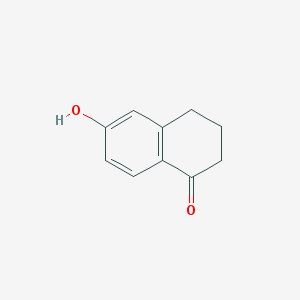Dependent supplement: the development trend of private medical service in China (I)
-
Last Update: 2019-11-07
-
Source: Internet
-
Author: User
Search more information of high quality chemicals, good prices and reliable suppliers, visit
www.echemi.com
For a long time, both the government and the market have positioned private hospitals as a supplement to public hospitals However, the development of private hospitals does not show the pattern of complementary with public hospitals in developed countries, and more shows the pattern of relying on the development of high-quality public hospitals Whether from the perspective of regions, private hospitals in regions with strong public hospitals are also strong, or from the perspective of specific specialty development, if there is no advantage of public hospitals and specialty support, private hospitals can only develop low-tech threshold specialty services The main reason for this phenomenon is that medical services are highly dependent on talents Only in areas with concentrated high-quality medical resources can the development of private hospitals be promoted Dependent supplement also doomed the development mode of private hospitals can only be more but not strong, more rely on resources rather than their own strength In terms of numbers, the growth of private hospitals in China is very fast In 2017, the total number of hospitals in China was 31056, including 12297 public hospitals and 18759 private hospitals The number of public hospitals decreased by 3% compared with that in 2017, while the number of private hospitals increased by 14% compared with that in 2017 However, private hospitals are more than public hospitals in terms of service volume and income In 2017, private hospitals accounted for 60% of the total number of hospitals, but only 14% of the total number of patients, 18% of the total number of patients and 15% of the total number of inpatient surgeries In 2017, the number of public hospitals and private hospitals increased by 4% and 16% respectively However, the growth rate of public hospitals is still 4%, while that of private hospitals is mainly due to the increase of the number of institutions The average income of private hospitals is significantly lower than that of public hospitals In terms of average hospital income, the average hospital income of public tertiary hospitals is 4.68 times that of private tertiary hospitals, 4.1 times that of secondary hospitals and 1.69 times that of primary hospitals From a national perspective, the development of private hospitals is extremely uneven, mainly focusing on two contradictions: the contradiction between service ability and effective demand, the contradiction between payment ability and service demand After more than 20 years of development, especially in the past 10 years of large-scale private hospital investment boom, the supply of medical services in China has in fact been very sufficient But if from the perspective of the strength of supply, the effectiveness of the supply of grass-roots medical institutions, especially those below the second level, is insufficient, and patients are still directly flocking to the third level hospital for medical treatment As previously analyzed, low-level hospitals are constrained by the level of doctors and cannot attract enough patients for medical treatment This has formed the contradiction between supply and effective demand Although the supply of private hospitals can be increased rapidly, due to the lack of strength, it can not attract enough patients, and the utilization rate of beds is very low In terms of the number of private hospitals, the number of private hospitals in remote areas increased the fastest, with Tibet, Qinghai and Liaoning ranking the top three, with an average annual growth rate of more than 20% In the most developed areas, such as Shanghai and Beijing, the number of private hospitals is relatively small In other developed areas, such as Zhejiang and Guangdong, private hospitals have grown, but not so fast, close to the national average However, in most areas where the utilization rate of private hospitals is on the high side, the utilization rate of public hospitals is on the high side The decline of private hospital bed utilization rate is consistent with the rapid growth of private hospital institutions, suggesting that the new hospital bed utilization performance is poor In terms of the number of beds per thousand people, most of the beds that exceed the national average are in the central and western regions, of which nearly half are in low utilization This shows that the effective demand in these areas is generally insufficient In addition to the quantitative comparative analysis, from the perspective of overall strength, most of the top ten regions with the number of private tertiary hospitals and the number of beds per hospital are economically developed regions with advantages in medical resources, suggesting that the service strength of hospitals depends more on high-quality medical resources These areas are also the areas where the number of private hospitals grows slowly Due to the existence of superior public hospitals, the cost of establishing hospitals in these areas is relatively high, and the private hospitals with strong cost control management measures and poor strength have difficulties in survival They also rely on the lengthening of the length of stay to make profits Only a few private hospitals survive on their strength, and some private hospitals are driven by the capital in recent years But it remains to be seen whether it will last Due to the lack of effective demand of private hospitals, it is obvious to rely on lengthening the length of stay to maintain income In 2017, the average length of stay of Chinese hospitals was 9.3 days, down 1.2 days from 10.5 days in 2010 The average length of stay in public hospitals was 9.4 days, down 1.3 days compared with 2010, while that in private hospitals was 8.7 days, up 0.3 days compared with 2010, especially after 2015, the length of stay in private hospitals increased significantly.
This article is an English version of an article which is originally in the Chinese language on echemi.com and is provided for information purposes only.
This website makes no representation or warranty of any kind, either expressed or implied, as to the accuracy, completeness ownership or reliability of
the article or any translations thereof. If you have any concerns or complaints relating to the article, please send an email, providing a detailed
description of the concern or complaint, to
service@echemi.com. A staff member will contact you within 5 working days. Once verified, infringing content
will be removed immediately.







